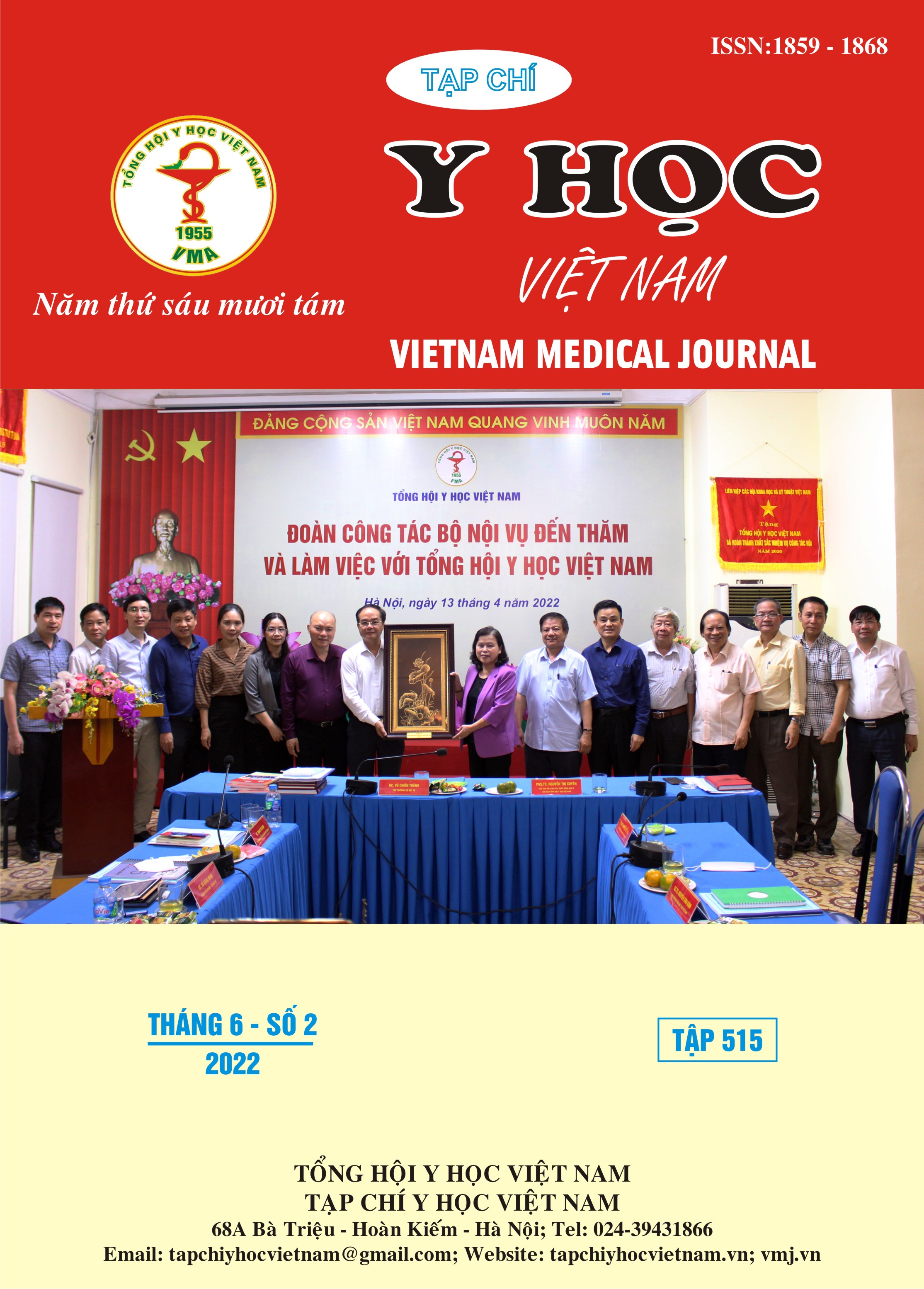CHARACTERISTICS OF BONE MARROW SAMPLES USED IN AUTOLOGOUS STEM CELL THERAPY FOR SUPPORTIVE TREATMENT OF BILIARY ATRESIA
Main Article Content
Abstract
Objectives: To describe characteristics of bone marrow samples used in autologous stem cell therapy for supportive treatment of biliary atresia. Subjects and method: A prospective case series including 30 patients diagnosed with biliary atresia and undergone Kasai surgery combined with autologous bone marrow stem cell therapy at Vietnam National Children’s Hospital from May 2021 to March 2022. Results: 30 patients including 16 male and 14 female patients were enrolled. The average age of patients was 77,4 days old. The volume of bone marrow sample after aspiration including 10% anticoagulant was 74 ± 13 (mL). In bone marrow samples, the average number of total nucleated cells was 1,20 ± 0,35 × 109 cells with concentration of 16,47 ± 4,95 G/L, the average number of mononuclear cells was 0,694 ± 0,198 × 109 cells with concentration of 9,54 ± 3,06 G/L. The average number of hematopoietic stem cells (CD34+) was 53,09 ± 21,79 ×106 cells with concentration of 729,17 ± 328,87 cells/µL and viability was 98,04 ± 1,75%. The majority of bone marrow bacterial cultures were negative. There were only four positive samples owing to contamination. Systemic blood pressure (SBP) was slightly decreased during bone marrow harvesting period, then returned to normal range (72,83 ± 5,65 mmHg) at the end of procedure. Conclusion: All bone marrow samples have the standard criteria of cell count and concentration for the autologous stem cell therapy in treament of biliary atresia. Bone marrow harvesting is a relatively safe procedure.
Article Details
Keywords
Biliary atresia, Bone marrow fluid, Autologous stem cell therapy
References
2. Vi Quỳnh Hoa (2020), “Nghiên cứu đặc điểm và hiệu quả của khối tế bào gốc tự thân từ tuỷ xương trong điều trị chấn thương cột sống có liệt tuỷ hoàn toàn”, Luận án Tiến sĩ Y học, Trường Đại học Y Hà Nội.
3. Cox, C. S., Jr., et al. (2011), "Autologous bone marrow mononuclear cell therapy for severe traumatic brain injury in children", Neurosurgery. 68(3), pp. 588-600.
4. Gonzalez, K. W., et al. (2015), "Hemorrhagic Shock", J Pediatr Intensive Care. 4(1), pp. 4-9.
5. Hartley, J. L., Davenport, M., and Kelly, D. A. (2009), "Biliary atresia", Lancet. 374(9702), pp. 1704-13.
6. Khan, A. A., et al. (2008), "Safety and efficacy of autologous bone marrow stem cell transplantation through hepatic artery for the treatment of chronic liver failure: a preliminary study", Transplant Proc. 40(4), pp. 1140-4.
7. Nguyen Thanh, L., et al. (2021), "Outcomes of bone marrow mononuclear cell transplantation combined with interventional education for autism spectrum disorder", Stem Cells Transl Med. 10(1), pp. 14-26.
8. Sharma, S., et al. (2011), "Bone marrow mononuclear stem cell infusion improves biochemical parameters and scintigraphy in infants with biliary atresia", Pediatr Surg Int. 27(1), pp. 81-9.
9. Sokol, R. J., et al. (2003), "Pathogenesis and outcome of biliary atresia: current concepts", J Pediatr Gastroenterol Nutr. 37(1), pp. 4-21.


